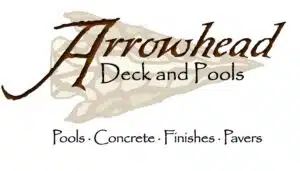Which would be better for your project? A few factors may make one more attractive as an option.
Thickness: Often, we find that pavers on top of existing concrete don’t allow for a smooth surface and create a trip hazard with adjoining areas. Concrete can be demoed out depending on the situation, and areas can be sloped or adjusted to accommodate. However, depending on the project, the demo and use of special equipment can add a lot to the cost. Concrete overlays existing concrete, giving a fresh face, and they are about the thickness of a coin. There would be no trip hazard created.
Cost: Pouring new concrete and installing an overlay on top can be more expensive than concrete pavers. However, if you already have concrete you want to coat, the cost is minimal compared to pavers. You have a range of options in both from economical to elaborate. Ask us about more details to find the right solution for your budget.
Aesthetic: There are ….a lot…of options. Pavers are manufactured but there are variations in colors through each batch. Even natural stone mined in a separate area of the same quarry will produce some slight variations. As pavers are a prefabricated product its fairly easy to assume what the final product will look like. With concrete overlays, you choose either a solid color paint or a custom colored stain. Concrete Stains are artistry blended with science. They are custom and as such they are offered with sample boards to ensure the final coloring will meet your goals.
Temperature: Its hot in the summer. For paws and bear feet this could be a great consideration. Pavers, plain concrete, stone, tile do not have any cooling principles. Concrete overlays do have temperature reducing capacities. Some solid color paints are offered in Reflecto Seal which will reduce the surface temperature an additional 15 degrees. This pigment technology was first developed by the military in Desert Storm. Initially, tanks were easily detected by the enemy using simple infrared technology, since the tanks got hotter than the surrounding desert.
